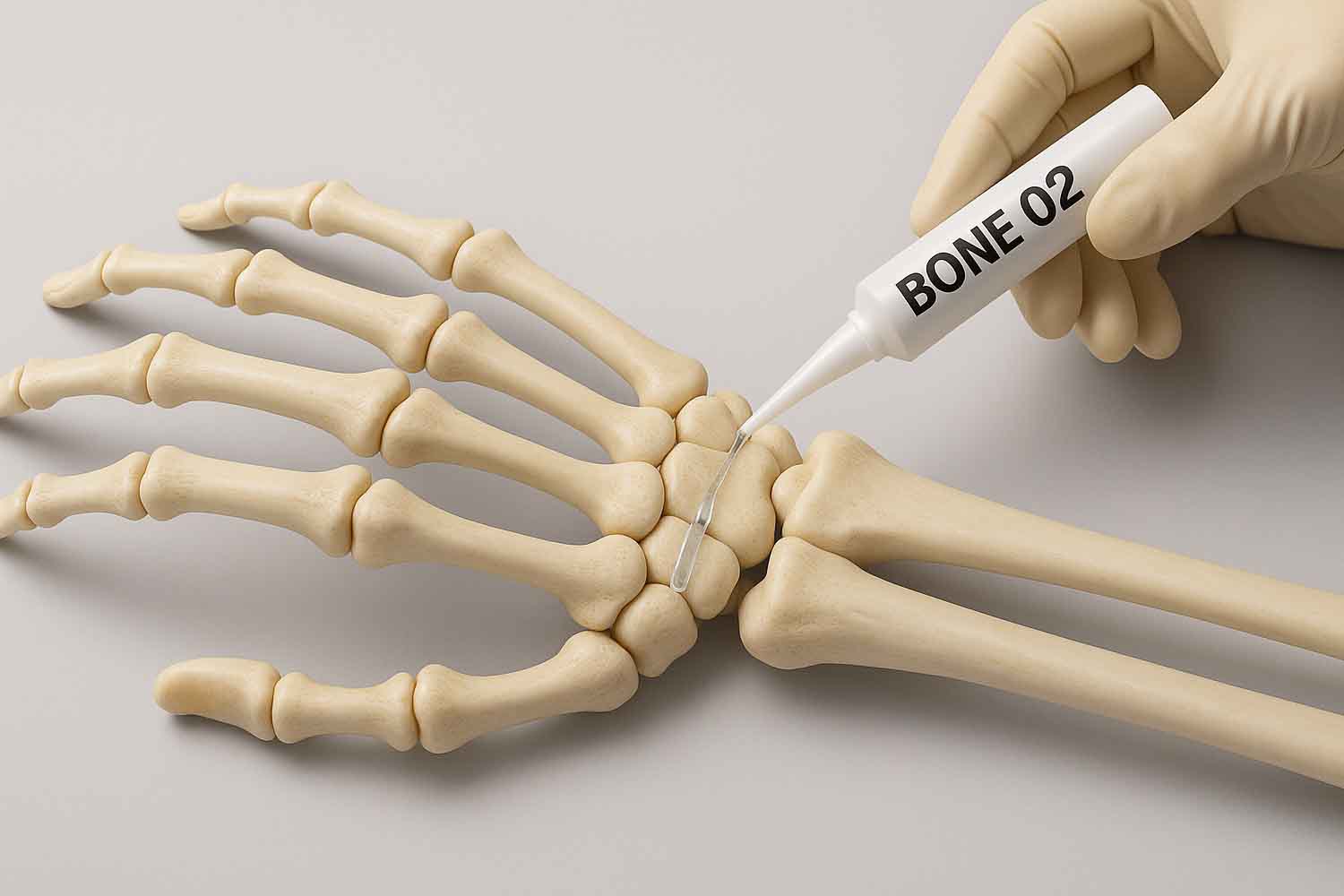A new bio-inspired surgical glue, Bone 02, can fix shattered bones in minutes without metal plates or screws, offering faster recovery and broader medical applications.

Table of contents
Comminuted fractures — those messy breaks where a bone shatters into many tiny fragments — are among the toughest injuries to treat. They often follow high-impact trauma: a car accident, a bad fall, a moment that changes everything in a split second. And when the bone splinters into dozens of pieces, rebuilding it becomes a long, delicate, and risky puzzle.
Even with modern orthopedic techniques — metal plates, screws, and sophisticated fixation devices — these tools struggle with fragments that are simply too small to hold. During surgery, tiny bone pieces can be lost or fail to fit together properly. The result is often a slow, incomplete recovery, sometimes leaving bones deformed or poorly fused. In severe cases, post-traumatic osteoarthritis sets in, bringing chronic pain and reduced mobility that can last a lifetime.
A simple but brilliant idea
For decades, Professor Fan Shunwu, a veteran Chinese orthopedic surgeon, dreamed of something radical: a material that could glue bones back together without relying on metal hardware.
It was Dr. Lin Xianfeng, a young surgeon raised by the sea, who stumbled upon the key. During a visit to his coastal hometown, Lin noticed the way oysters clung stubbornly to pier pillars, their shells fused tight despite waves and constant humidity. That small, almost trivial observation sparked a big question:
What if we could replicate that natural adhesive power inside the human body, in the wet, complex environment where fractures happen?
From that question emerged Bone 02, a surgical glue inspired by nature but engineered in the lab, designed to hold bone fragments firmly together — even in bloody, humid surgical sites where traditional methods struggle.
How bone 02 works
The team spent years refining biocompatible materials, making sure the glue wouldn’t trigger immune reactions. What they ended up with was an adhesive that’s fast-acting, easy to use, and fully biodegradable.
It bonds within minutes, even in wet conditions. Surgeons can apply it through a small incision of about 0.8–1.2 inches (2–3 cm), without the need for extensive cutting or bulky implants. Once in place, Bone 02 slowly biodegrades inside the body over six months (circa 180 days), leaving behind clean, fully healed bone — no removal surgery required.
The name “Bone 02” is a playful nod to “502 glue”, the famously strong household adhesive. But this time, the target isn’t plastic — it’s living bone.
A complex fracture fixed in just 3 minutes
Bone 02 has already been used in more than 150 surgeries across China, often with impressive results. One striking case involved a young construction worker who suffered a comminuted wrist fracture, the kind that typically demands a long, grueling operation with plates and screws.
Normally, surgeons would make a wide incision, spend hours reconstructing the puzzle, and eventually schedule a second operation months later to remove the metal hardware. But with Bone 02, the surgical team tried something different.
They made a tiny incision, slid the adhesive between the bone fragments, and three minutes later, the wrist was fixed.
Three months on, the patient had fully regained mobility without complications. No metal. No second surgery. Just bone, healed.
Dr. Lin believes Bone 02’s greatest strength is its versatility. It can be used on almost any fracture, even microscopic bone splinters where plates and screws simply can’t reach.
He also sees clear potential in emergency scenarios — war zones, natural disasters, or field hospitals — where time is scarce and medical equipment is limited. Being able to stabilize fractures quickly, with minimal tools, could save limbs and lives.
And the applications don’t stop there. Clinical trials are already planned to test Bone 02 for dental implant procedures and minimally invasive spinal fixation, two areas where current methods can be cumbersome and invasive.
Bone 02 was developed at Sir Run Run Shaw Hospital, part of Zhejiang University, known for its interdisciplinary research and pragmatic approach to patient care.
This isn’t the team’s first headline-making innovation. Three years ago, they turned heads by transferring spinach chloroplasts into animal cells, harnessing photosynthesis to treat diseases — a world-first study published in Nature.
Hospital director Cai Xiujun summed up the philosophy behind Bone 02 succinctly:
“Bone 02 was born from real patient problems. It’s the result of teamwork, innovation, and a focus on quality of care. Now, we want this technology to reach beyond China as soon as possible.”
Fonte: Global Times
